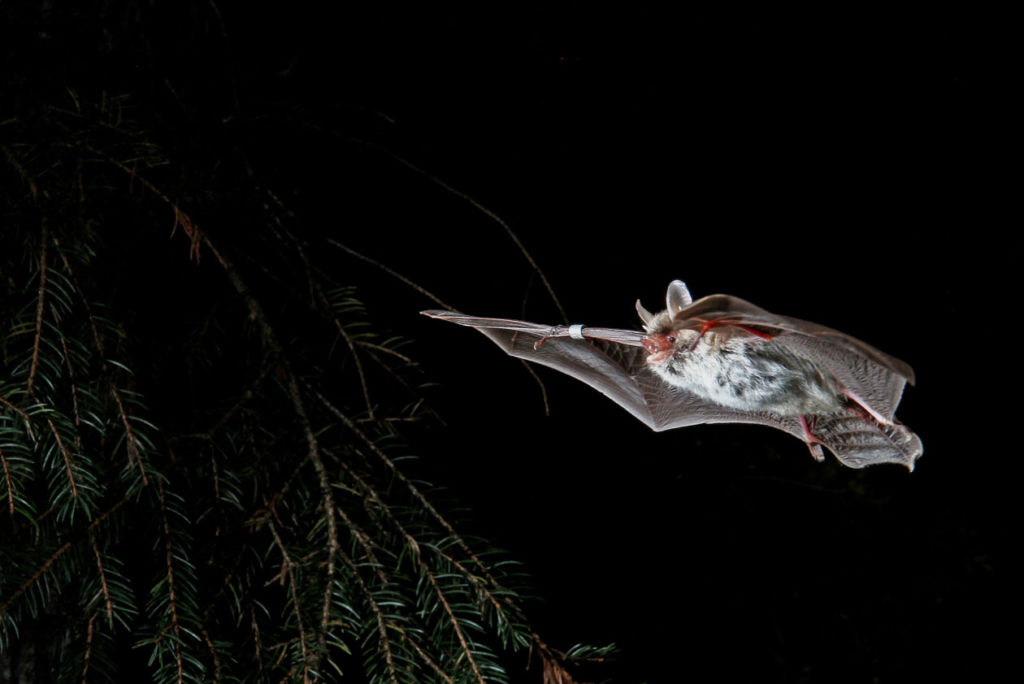[LUM#12] Diversity as a means of adaptation
Genetic diversity reduces the risk of population extinction in the face of global warming. This is the finding of a team of researchers who have studied the genome of bats to better predict their future in the face of rising temperatures. The results open up new avenues for better species preservation.

How will different animal species react to climate change? " Some scenarios consider that animals will simply move northwards as the climate warms, to find temperatures that are favorable to them", explains Sébastien Puechmaille. A model described as "naive" by the chiropterist from theInstitut des sciences de l'évolution de Montpellier (Isem).
"It's not that simple: many animals actually move very little. This is the case, for example, of the little rhinolophus, a species of bat that has been shown to move more slowly than global warming. As for those bats that manage to keep up, the destination has to meet their needs, particularly for food. " Many bats are insectivores, and if the prey they feed on has not followed this new distribution, then the conditions for their survival are not met - this is what we call a mismatch ".
Heat resistance
"If you want to model the future of populations in the face of global warming, you can't just take temperature and humidity into account. One of them, genetic diversity, has been little studied until now. " It's a question of considering the variability of populations within the same species", explains the chiropterist. For example, within the same bat population, certain individuals are genetically better adapted to withstand heat or cold.
To understand this parameter, Sébastien Puechmaille and his colleagues have developed a new approach: they integrate the potential for genetic adaptation into models that predict the evolution of a species' range in response to climate change. To do this, the researchers analyzed genomic data from two bat species native to the Mediterranean, a region particularly affected by rising temperatures.
Forest corridors
"Analysis of the DNA of 278 bats enabled us to identify and differentiate between individuals adapted to thrive in hot, dry habitats and those adapted to colder, wetter habitats", explains the researcher.
This diversity is important to consider, as the potential for genetic adaptation gives these individuals a better chance of survival in the event of rising temperatures or drought. Indeed, in the event of rising temperatures, populations of individuals adapted to colder, wetter habitats will decline, unless they receive individuals from populations adapted to warmer, drier habitats, who will bring with them the share of genetic diversity necessary for adaptation, thus reducing the risk of extinction.
But bats from different habitats need to be able to meet up ... "These are forest-dwelling species, and they need forest corridors to move from one area to another, " explains Sébastien Puechmaille. These are forest-dwelling species, and they need forest corridors to move from one area to another," explains Sébastien Puechmaille. If the forest cover is favorable to bat movement, there is good connectivity between populations, which maximizes the arrival of adapted individuals and favors population survival, compared with what is predicted by conventional models which do not integrate this parameter".
Preserving habitat
These results may lead to more accurate predictions of the effects of global warming, but they also encourage us to think more carefully about conservation strategies. "Apart from the fact that there are geographical barriers to movement, such as the Pyrenees and the Alps, policies to date have rarely taken into account the importance of these forest corridors on a national or even continental scale. The habitat of these species is therefore globally fragmented, which hinders the movement of individuals", explains the researcher. " It is essential to preserve habitat to ensure the survival of species in the face of climate change, and to do this we need to think on a large scale, not just locally, but internationally.
This is a key issue for the future of these small flying mammals, whose population has already fallen drastically since the Second World War, "a priori largely due to the use of pesticides and changes in agricultural practices". Today, there are 1,400 species of bats in the world, and some species are already considered extinct.
UM podcasts are now available on your favorite platforms (Spotify, Deezer, Apple podcasts, Amazon Music...).